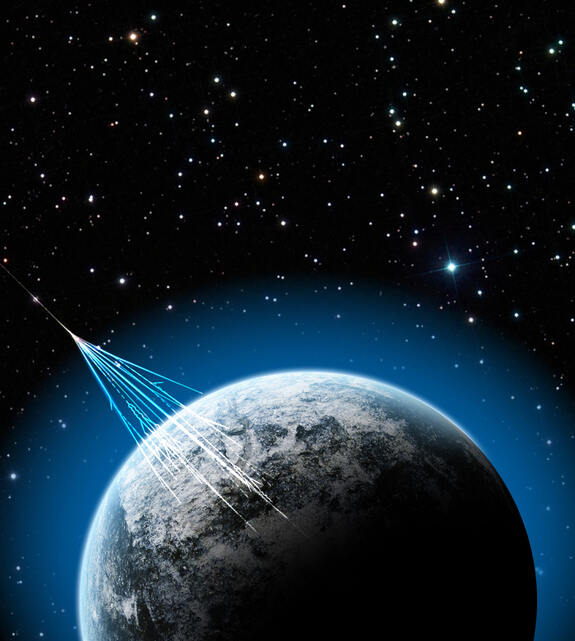
Another OMG cosmic ray particle that defies science
Researchers have seen the second-largest known cosmic ray. Where in the universe such an energetic ray may originate is beyond the understanding of physicists. Its particles shouldn’t be there.
The extremely intense streams of subatomic particles known as cosmic rays travel through the universe almost as quickly as light. About 89% of them are protons, or hydrogen nuclei, 10% are helium nuclei, and the final 1% are heavier nuclei, which on the Periodic Table range all the way up to uranium.

Ultra-high-energy cosmic ray astronomy shown by an artist to show how very energetic occurrences differ from weaker cosmic rays that are affected by electromagnetic fields. Photo courtesy of Ryuunosuke Takeshige, Kyoto University, and Osaka Metropolitan University.
New particles are generated when these fast-moving nuclei clash with atoms in Earth’s upper atmosphere. In actuality, positrons—the first known antimatter particle—as well as muons, pions, kaons, and other particles outside of the atom were discovered as a result of these interactions.

On Earth, these particle streams are falling nonstop. Every minute, cosmic rays impact every square centimeter of Earth. Some may originate from supernovae, the most colossal explosion in recorded scientific history—the terrible demise of a big star.
There are times when cosmic rays are found to contain particles of such great energy that physicists are at a loss for words. The greatest energy cosmic ray ever detected was found in 1991. The particle was named “Oh-My-God.
